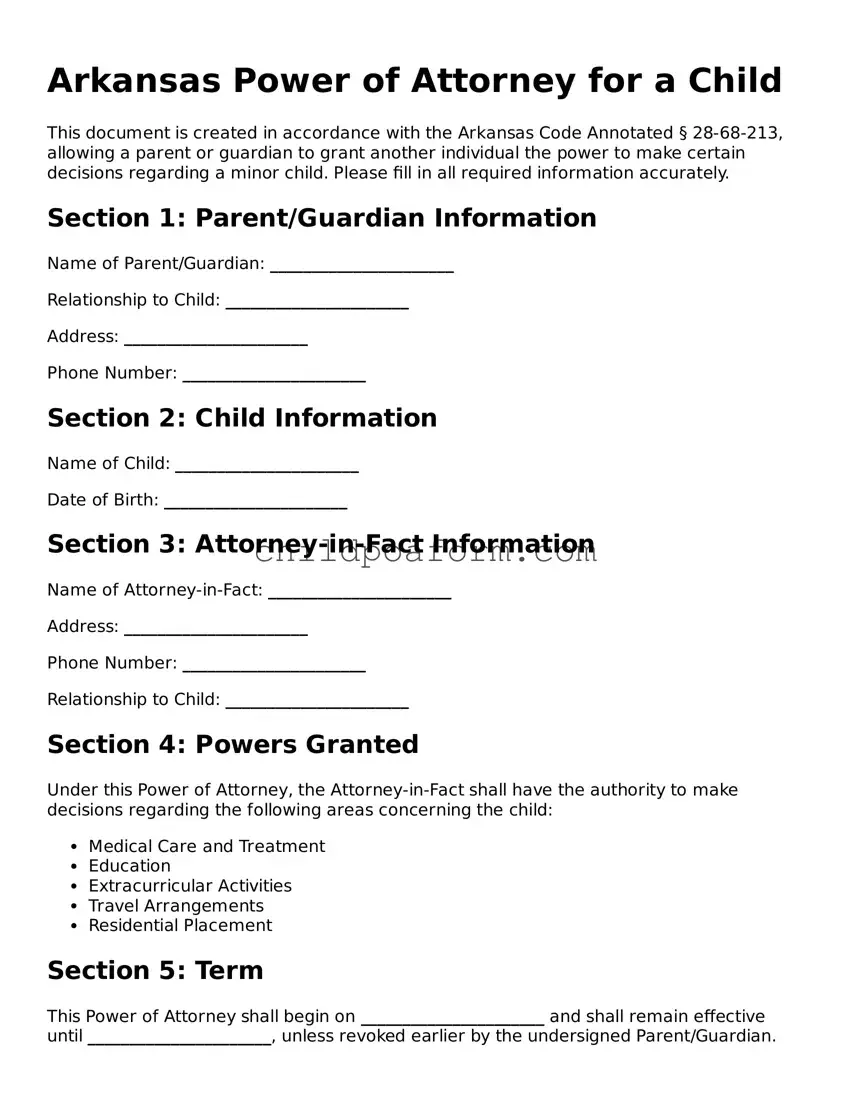Instructions on Utilizing Arkansas Power of Attorney for a Child
Filling out the Arkansas Power of Action for a Child form is a significant step towards ensuring the well-being of a child under circumstances where the primary caregivers are unable to fulfill their duties temporarily. This process allows guardians to appoint a trusted individual who will have the authority to make decisions on behalf of the child. The person granted this power can make decisions regarding the child's education, health care, and other essential needs. The following steps are designed to guide caregivers through completing this form accurately and effectively.
- Gather all necessary information including the full names and addresses of the parent(s) or current legal guardian(s), the full name and address of the person being granted the power of attorney, and the full name and date of birth of the child.
- Locate the official Arkansas Power of Attorney for a Child form. This can often be found online through legal resources or provided by a local attorney or legal aid organization.
- Begin by entering the date the document is being filled out at the top of the form.
- Fill out the section labeled “Part 1” with the parent(s) or legal guardian(s)' full names and addresses, indicating their relationship to the child.
- In the section marked “Part 2,” specify the full name and address of the individual who is being designated as the attorney-in-fact for the child.
- Detail the child’s full name and date of birth in the designated section.
- Clearly outline the specific powers granted to the attorney-in-fact, including any limitations, in the section provided. This may cover decisions related to the child's education, healthcare, and other important matters.
- If the power of attorney is to be limited to a certain period, specify the start and end dates. If no specific time frame is mentioned, note that the document will remain in effect until it is revoked or in accordance with state laws.
- Review the document carefully, ensuring all provided information is accurate and complete.
- Have the parent(s) or legal guardian(s) sign the document in the presence of a notary public. The attorney-in-fact may also be required to sign, depending on state requirements.
- Finalize the form by having it notarized. This typically involves signing the document in front of a notary public, who will then validate the identity of the signees and their willingness to sign the document of their own free will.
Once completed, it is crucial to provide a copy of the form to the appointed attorney-in-fact and keep original documents in a safe but accessible place. Additionally, relevant parties such as schools, healthcare providers, and other significant entities should be informed of this legal arrangement to ensure the child's needs are met seamlessly. Remember, the well-being of the child is always the primary focus, and this document is a step towards safeguarding their future in times of uncertainty.
